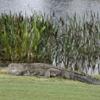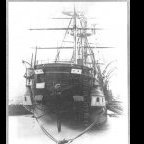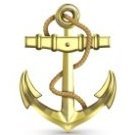MORE HANDBOOKS ARE ON THEIR WAY! We will let you know when they get here.
×
-
Posts
1,868 -
Joined
-
Last visited
Reputation Activity
-
 Chuck Seiler reacted to Blue Ensign in HMS Sphinx 1775 by Blue Ensign - FINISHED - Vanguard Models - 1:64 scale
Chuck Seiler reacted to Blue Ensign in HMS Sphinx 1775 by Blue Ensign - FINISHED - Vanguard Models - 1:64 scale
Thank you Bug, and Mike.
Post Ninety-three
Chain Pumps continued.
Trial fit follows trial fit to ensure that everything slots into place.
6030
Sphinx is starting to resemble a building site.
6036
6038
6041
The caps to the pump stanchions are blackened and fitted, and the gallows top fixed into place.
6033
A fair bit of what lies beneath the Qtr Deck will be on show but before the beams are put into place I need to complete the chain pump workings.
To this end I have some small square section brass rod on order to make the winch couplings.
On thing that caught my eye is the rather awkward positioning of the Main ladderway leading directly onto the pump stanchions with the pump handles inhibiting clear access.
The kit arrangement is correct and matches the Admiralty plan.
Far be it from me to tell the 18th century naval architects their business, but I do wonder why the ladder wasn’t set on the forward side of the ladderway which is free of obstruction.
I’ve pondered on two other questions;
Why no sweep ports on Sphinx, they were pretty much de-rigueur on small ships of the era. Even Pandora, a larger frigate had them.
Neither the Marshall painting nor the Adm Plans show these features.
Not complaining, more than happy to omit these tricky little items.
Why no posts for swivel guns, I’m sure she would have had them.
They are not catered for on the kit, nor shown on the Adm plan, but the Marshall painting shows three posts extending above the Qtr deck rail, a key indicator that they are swivel posts.
Always more questions than answers in this interest of ours.🤔
B.E.
08/03/22
-
 Chuck Seiler reacted to rudybob in Getting this plank lined up and lying flat
Chuck Seiler reacted to rudybob in Getting this plank lined up and lying flat
When I hold the strake in my hand I think...NO WAY this is going to fit. Then I put it in place and it really fits. I am happy. I could not have done this without the serious help I get in this forum. Thanks Men! Where's MY GLUE ? ....just kidding :-) More stuff to do before permanence sets in
-
 Chuck Seiler reacted to rudybob in question about garboard planks
Chuck Seiler reacted to rudybob in question about garboard planks
One of the best comments ever. Thanks
-
 Chuck Seiler got a reaction from bruce d in question about garboard planks
Chuck Seiler got a reaction from bruce d in question about garboard planks
You ARE sitting at a long crafting table with others...1000s of others...with Wefalck sitting next to you. That is what MSW is all about.
Welcome aboard.
-
 Chuck Seiler got a reaction from rudybob in question about garboard planks
Chuck Seiler got a reaction from rudybob in question about garboard planks
You ARE sitting at a long crafting table with others...1000s of others...with Wefalck sitting next to you. That is what MSW is all about.
Welcome aboard.
-
 Chuck Seiler got a reaction from JayBee750 in Recommendations for new member
Chuck Seiler got a reaction from JayBee750 in Recommendations for new member
Welcome aboard.
There is alot of good info about beginner kits above, so I will not go into that. As a plastic model builder, you are familiar with opening the box and seeing a bunch of pieces. Many wooden ship model newbies open their first model kit and think "oh my, what have I gotten myself into?" The newer generation of ship models have evolved from the 'box of sticks and strings' but it can still be daunting. Don't let it be. As mentioned above, starting small and learning the ropes (or the sticks) lets you get a feel for the wood and the techniques.
Wood is much more forgiving than plastic. I can honestly say that every ship model I built, I built twice. The first time and then the second time after I pulled it apart so I can fix the things I screwed up. I use a good wood glue rather than CA glue (superglue) for many reasons. One is because it can be unglued easily. Crappy planking can be unglued and redone. Trying to work around a problem tends (in my experience) to compound the problem over time.
...and you can never have too many clamps.
-
 Chuck Seiler got a reaction from allanyed in question about garboard planks
Chuck Seiler got a reaction from allanyed in question about garboard planks
You ARE sitting at a long crafting table with others...1000s of others...with Wefalck sitting next to you. That is what MSW is all about.
Welcome aboard.
-
 Chuck Seiler got a reaction from mtaylor in Recommendations for new member
Chuck Seiler got a reaction from mtaylor in Recommendations for new member
Welcome aboard.
There is alot of good info about beginner kits above, so I will not go into that. As a plastic model builder, you are familiar with opening the box and seeing a bunch of pieces. Many wooden ship model newbies open their first model kit and think "oh my, what have I gotten myself into?" The newer generation of ship models have evolved from the 'box of sticks and strings' but it can still be daunting. Don't let it be. As mentioned above, starting small and learning the ropes (or the sticks) lets you get a feel for the wood and the techniques.
Wood is much more forgiving than plastic. I can honestly say that every ship model I built, I built twice. The first time and then the second time after I pulled it apart so I can fix the things I screwed up. I use a good wood glue rather than CA glue (superglue) for many reasons. One is because it can be unglued easily. Crappy planking can be unglued and redone. Trying to work around a problem tends (in my experience) to compound the problem over time.
...and you can never have too many clamps.
-
 Chuck Seiler got a reaction from Keith Black in Recommendations for new member
Chuck Seiler got a reaction from Keith Black in Recommendations for new member
Welcome aboard.
There is alot of good info about beginner kits above, so I will not go into that. As a plastic model builder, you are familiar with opening the box and seeing a bunch of pieces. Many wooden ship model newbies open their first model kit and think "oh my, what have I gotten myself into?" The newer generation of ship models have evolved from the 'box of sticks and strings' but it can still be daunting. Don't let it be. As mentioned above, starting small and learning the ropes (or the sticks) lets you get a feel for the wood and the techniques.
Wood is much more forgiving than plastic. I can honestly say that every ship model I built, I built twice. The first time and then the second time after I pulled it apart so I can fix the things I screwed up. I use a good wood glue rather than CA glue (superglue) for many reasons. One is because it can be unglued easily. Crappy planking can be unglued and redone. Trying to work around a problem tends (in my experience) to compound the problem over time.
...and you can never have too many clamps.
-
 Chuck Seiler got a reaction from The Gimps Chimp in Recommendations for new member
Chuck Seiler got a reaction from The Gimps Chimp in Recommendations for new member
Welcome aboard.
There is alot of good info about beginner kits above, so I will not go into that. As a plastic model builder, you are familiar with opening the box and seeing a bunch of pieces. Many wooden ship model newbies open their first model kit and think "oh my, what have I gotten myself into?" The newer generation of ship models have evolved from the 'box of sticks and strings' but it can still be daunting. Don't let it be. As mentioned above, starting small and learning the ropes (or the sticks) lets you get a feel for the wood and the techniques.
Wood is much more forgiving than plastic. I can honestly say that every ship model I built, I built twice. The first time and then the second time after I pulled it apart so I can fix the things I screwed up. I use a good wood glue rather than CA glue (superglue) for many reasons. One is because it can be unglued easily. Crappy planking can be unglued and redone. Trying to work around a problem tends (in my experience) to compound the problem over time.
...and you can never have too many clamps.
-
 Chuck Seiler got a reaction from Ryland Craze in Recommendations for new member
Chuck Seiler got a reaction from Ryland Craze in Recommendations for new member
Welcome aboard.
There is alot of good info about beginner kits above, so I will not go into that. As a plastic model builder, you are familiar with opening the box and seeing a bunch of pieces. Many wooden ship model newbies open their first model kit and think "oh my, what have I gotten myself into?" The newer generation of ship models have evolved from the 'box of sticks and strings' but it can still be daunting. Don't let it be. As mentioned above, starting small and learning the ropes (or the sticks) lets you get a feel for the wood and the techniques.
Wood is much more forgiving than plastic. I can honestly say that every ship model I built, I built twice. The first time and then the second time after I pulled it apart so I can fix the things I screwed up. I use a good wood glue rather than CA glue (superglue) for many reasons. One is because it can be unglued easily. Crappy planking can be unglued and redone. Trying to work around a problem tends (in my experience) to compound the problem over time.
...and you can never have too many clamps.
-
 Chuck Seiler reacted to Brinkman in One more small cog c. 1410 by Brinkman - scale 1:13
Chuck Seiler reacted to Brinkman in One more small cog c. 1410 by Brinkman - scale 1:13
Now all the futtocks are in place.
The space under the fore deck is much smaller than the aft space and I made a more simple door. This one isn't hinged but just kept in place by a bar. Holes used as handles are hidden under the bar. I have no idea if something like this was used, but it seems plausible to me.
And on a last note there is news of the masts I saw being cut. A couple of days after I posted about it I saw this news article about how they are preparing the sailing ship Götheborg for hopefully another trip to China. In the link there is a clip of them making the yards. The article and clip is in swedish but you can still see how they fasten the two pieces together to form a yard.
https://www.svt.se/nyheter/lokalt/vast/ostindiefararen-gotheborg-far-ny-rigg
-
 Chuck Seiler reacted to Louie da fly in One more small cog c. 1410 by Brinkman - scale 1:13
Chuck Seiler reacted to Louie da fly in One more small cog c. 1410 by Brinkman - scale 1:13
I love your moulding (is that the same thing as a waterway?
I had a similar problem with my two most recent builds - if you have decking and exposed frames, unless you put in something like this moulding, water will get through the gaps between the decking and the frames and end up in the bilges. At the scale I was using I couldn't even get the decking to meet the external planking perfectly, let alone do this moulding.
Even a moulding running along the inner edges of the frames would help, as it would be a barrier to water running off the decking and into the bilges.
Steven
-
 Chuck Seiler got a reaction from mtaylor in question about garboard planks
Chuck Seiler got a reaction from mtaylor in question about garboard planks
You ARE sitting at a long crafting table with others...1000s of others...with Wefalck sitting next to you. That is what MSW is all about.
Welcome aboard.
-
 Chuck Seiler reacted to JayBee750 in Recommendations for new member
Chuck Seiler reacted to JayBee750 in Recommendations for new member
Hi all. Thanks to admin for accepting my registration.
I am an experienced model maker but this will be my first foray into wooden ships. I have done lots and lots of research on methods and pitfalls, and am looking at model choices.
I am not familiar with any in particular but am looking in the first instance at Occre. I have in mind either the HMS Beagle, Golden Hind or HMS Endeavour. Not sure if this is the correct place to ask as I do not yet know the forum, but can anyone give me pointers on manufacturers and models please.
Many thanks.
John
-
 Chuck Seiler reacted to mtaylor in Master Korabel and Falkonet models availability
Chuck Seiler reacted to mtaylor in Master Korabel and Falkonet models availability
We had a question the other day about that site being blocked from a member in the UK. It was working here in the States but not from the UK. They may very well be "open" but the restrictions by not just governments, but companies like credit cards may block any transfer of funds. The situation is still developing and more sanctions may be coming.
-
 Chuck Seiler reacted to wefalck in question about garboard planks
Chuck Seiler reacted to wefalck in question about garboard planks
One question: how could you fit the second plank 'correctly' without permanently fixing the garboard plank? It is quite likely that, once the garboard plank is in place, you will need to make further adjustments to the next strake up.
Otherwise, it is always advisable to work symmetrically, to avoid distorting the frames. Also, it is easier to judge symmetry, when you alternate between starboard and port.
-
 Chuck Seiler reacted to ChiefClanker in Winchelsea Nef by AnchorClanker - Scale 1:96 - first wood scratch build
Chuck Seiler reacted to ChiefClanker in Winchelsea Nef by AnchorClanker - Scale 1:96 - first wood scratch build
Interesting information about planking first construction then frames. It seems backwards; but then they built ships. Thank you for the heads up.
-
 Chuck Seiler reacted to Louie da fly in Winchelsea Nef by AnchorClanker - Scale 1:96 - first wood scratch build
Chuck Seiler reacted to Louie da fly in Winchelsea Nef by AnchorClanker - Scale 1:96 - first wood scratch build
Just be aware that I changed my mind about the frame construction partway through, and started making them a completely different way - see post #158 and #166 in my build log. The hefty through-beams and the deck-beams help keep the hull shape, compensating for the weaker construction method, as you can see in post #171.
You could probably assemble each of your frames as a unit consisting of the floor-timber, the futtocks and the deck-beam, which would add to the rigidity of its construction (strictly, the deck-beams should rest on the beam shelf, but all of that would be covered by the deck anyway, so it would be invisible).
Keep in mind that these ships almost certainly were built planking-first, not frame-first - the planking was put together then the frames were added. Frame-first construction was a later development. But unless you've got your wits about you, plank-first construction has a tendency to "squeeze" inwards resulting in a narrower vessel. There's nothing to stop you building yours frame-first - in fact there's a lot to be said for it, for consistency and symmetry and getting the hull-shape right.
Steven
-
 Chuck Seiler reacted to ChiefClanker in Winchelsea Nef by AnchorClanker - Scale 1:96 - first wood scratch build
Chuck Seiler reacted to ChiefClanker in Winchelsea Nef by AnchorClanker - Scale 1:96 - first wood scratch build
Oh! Heavens, no! I decided to continue building the original ship as a means to learn how to do make and attach the strakes, wales, and bottom planks. At the same time, 'start over' with making the 'plywood' frames, stem post, stern post, and keel. I am also looking more closely at how you built your frames and seeing how I was missing some details. Today I will start to redraw my frame plans. So, all is well and not lost.
Fair winds and following seas,
Mark
-
 Chuck Seiler reacted to bolin in Which kit is best to practice Planking?
Chuck Seiler reacted to bolin in Which kit is best to practice Planking?
My thoughts are that, since you have already done the NRG half hull model, you might try something more than than a launch or similar. The challenge you may encounter on a larger hull is the lining off and planning of the planking that a smaller hull may not present. Maybe a kit is not what you are looking for? And maybe not a warship? I have recently planked a early twentieth century schooner hull. No frills, just a big body to plank. It gave lots of practice.
-
 Chuck Seiler reacted to mtaylor in HMS Sphinx 1775 by mtaylor - FINISHED - Vanguard Models - 1:64
Chuck Seiler reacted to mtaylor in HMS Sphinx 1775 by mtaylor - FINISHED - Vanguard Models - 1:64
The quest for a fix for my eyes was a success. As for the build, I've been working with the PE friezes and less then happy with my work so I've pulled the few I had installed off and set them aside for now. Luckily, none have been damaged. I'll get the hang of this sooner or later.
While I think this through on the friezes, I'll bypass that step and come back to it.
-
 Chuck Seiler got a reaction from ChiefClanker in Winchelsea Nef 1274 A.D. by Louie da fly - FINISHED - 1:75
Chuck Seiler got a reaction from ChiefClanker in Winchelsea Nef 1274 A.D. by Louie da fly - FINISHED - 1:75
The lines are like the Pirate Code...more of a suggestion than actual rule.
-
 Chuck Seiler got a reaction from ChiefClanker in Winchelsea Nef 1274 A.D. by Louie da fly - FINISHED - 1:75
Chuck Seiler got a reaction from ChiefClanker in Winchelsea Nef 1274 A.D. by Louie da fly - FINISHED - 1:75
Or duct tape.
-
 Chuck Seiler reacted to ChiefClanker in Winchelsea Nef by AnchorClanker - Scale 1:96 - first wood scratch build
Chuck Seiler reacted to ChiefClanker in Winchelsea Nef by AnchorClanker - Scale 1:96 - first wood scratch build
Right about the sheer. I was examining the plan view again and am taking the sheer into account. At the moment, I decided how to produce the camber on the decks and will give it a try this coming week. After looking at your model, Steve, your point of making the fore deck and after deck with too steep of a slope is clear. In drawing the deck beams and through beams, the importance of correctly making the camber and slope of the two decks correctly is very important. This is where it might take more than one attempt at making these items is in order. As you said, the final result will be worth the effort.









